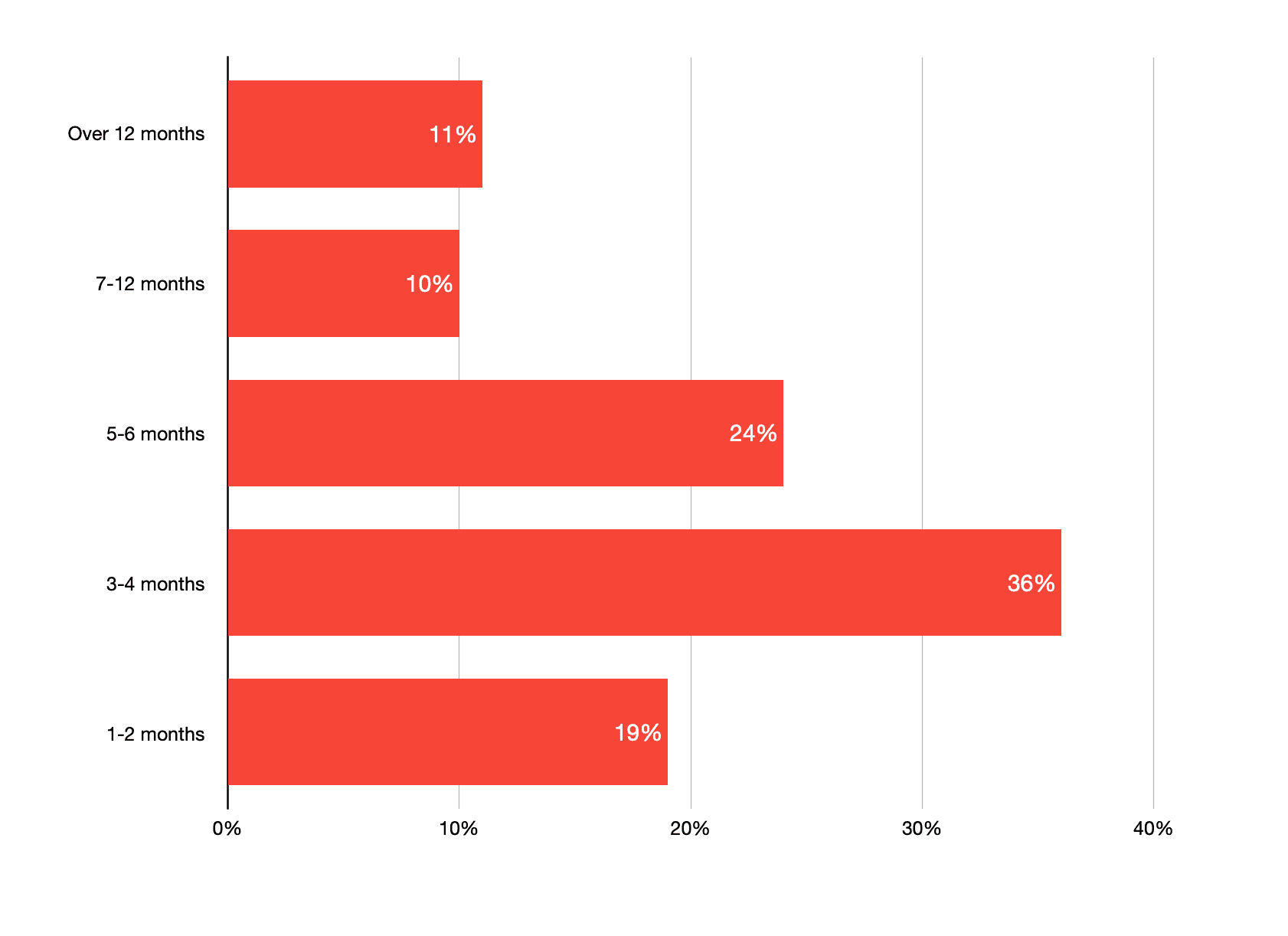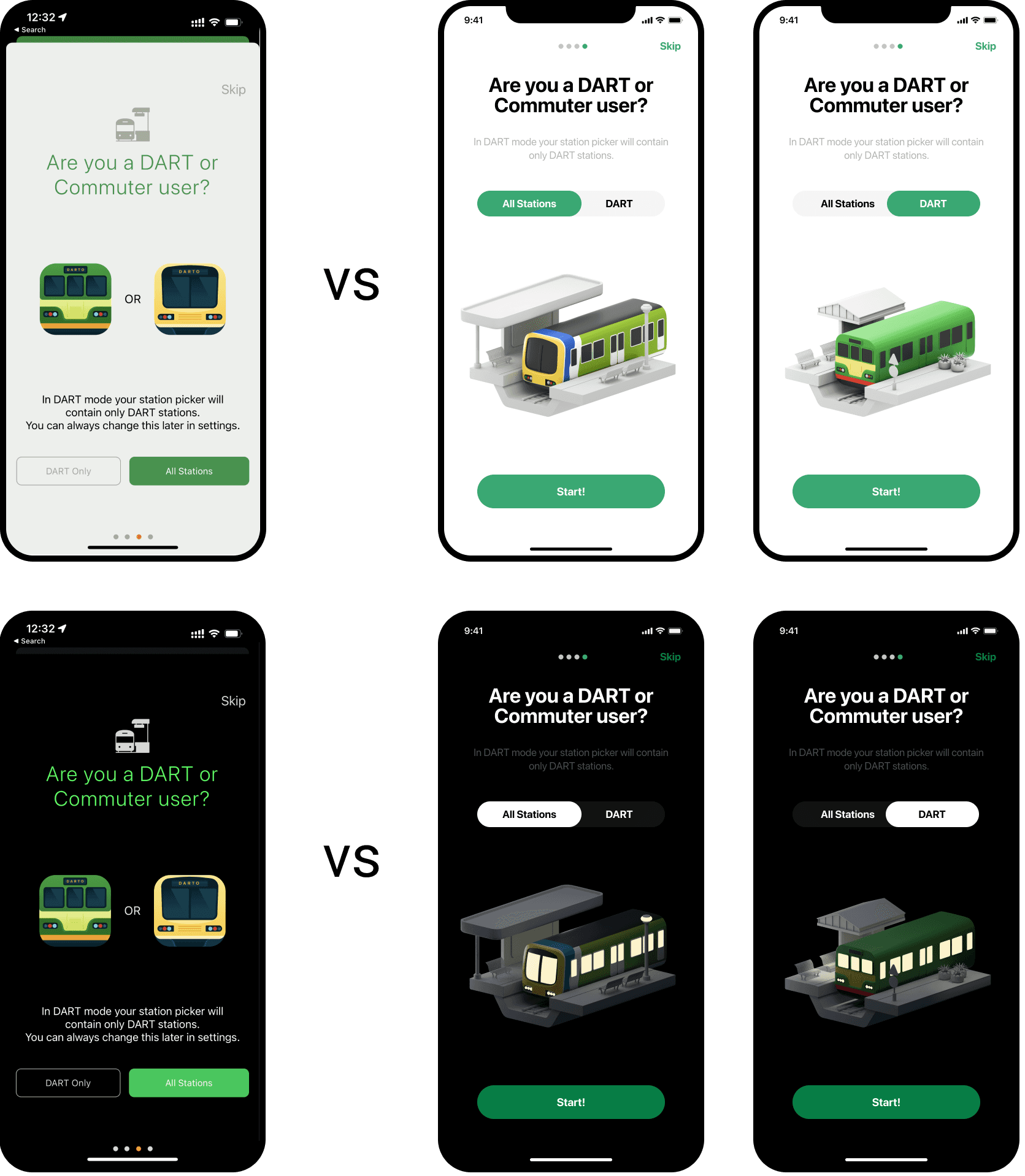Every service and product has a price tag. So does the app development. “How much does it cost to develop a simple app?”. I hear this question a lot: while presenting to customers or chatting with friends.
Once I had an interesting conversation with a taxi driver. After I told him that I develop apps, he asked: “Give me a ballpark. How much does it cost to build an app like Uber? It doesn’t seem too difficult.” When I told him that hundreds of people work on developing Uber every day, he simply didn’t believe it. “It looks like a very simple app, just a dozen of screens!”
Well, it only seems that way.
Let’s walk through the app development process and see what affect costs and why.
But before that - the ballpark, to save time for readers who want to get straight to the point. Extensive research from GoodFirms tells us that a simple app for an “economy project” would cost in the €25K-60K range and €38K-91K for a “high-end” project. Unfortunately, GoodFirms doesn’t explain the difference between economic and high-end projects in their research. But, I would assume that the main differences sit in the level of investment in app design, polishing and QA.
Again, that is a ballpark for a simple app. That’s a huge difference and a pretty steep entry price tag. However, my experience shows that those numbers are not far from the truth. So here is what I’ll usually give as a ballpark:
Simple app: No backend required, simple utility app.
Cost: €8-20K per platform
Time: 1-2 months
Examples: Calculator, FitHIT, ToDo List, Voice memosSimple app with backend: Basic app to display data coming from the server.
Cost: €15-25K per platform
Time 1.5-2.5 months
Examples: Darto, Radio Nova, simple Weather appMedium app: Many apps fall into this category. News apps, e-commerce, transportation, basic fintech apps.
Cost: €25-75K per platform
Time: 2.5-6 months
Examples: Flipdish, Noviscient, Gruv, GoCarComplex app: More complex e-commerce, fintech, social networks and other complex mobile applications.
Costs: over €75K per platform
Time: over 6 months
Examples: Zillow, Daft.ie, Nike, Carrot weather, Uber, Revolut
The costs above do not include backend or web development.
What makes up the price?
App development is a service. And services sell people’s expertise and time for money. The longer the project, the higher the costs. A more complex project requiring high-end skills (3D, AR, VR, blockchain) would cost more per day than a simpler one.
Team
Even the smallest app project requires a minimum of four roles:
Project manager 🦸♀️
Designer 👩🎨
Developer 👨💻
QA 👩🔬
Depending on the project size, complexity, and schedule, the number of people involved will vary. The list may also include other roles like business analysts, copyrighters, DevOps, motion designers, etc.
Project timelines
According to The Speed Of Change research by OutSystems, 81% of app development projects take more than 3 months per platform. And 21% off app projects take more than 7 months per platform.

The Speed Of Change - OutSystems, 2021
Factors affecting the development cost
Well, that’s pretty obvious, right? More screens -> higher costs. Well, that’s not as simple. Let’s highlight the most significant factors.
Features
App Complexity
Design
Number of platforms
Ongoing costs
Features: That factor sits at the very top of the list. More features lead to longer development time and higher costs. But, of course, not every feature is equal. Moreover, the same feature can be more or less complex depending on the project.
Let’s take the “Sign in” feature as an example. Sign in with email usually requires another feature, “Forgot password”. Additionally, most customers would like to have the social login option as well. Or you might prefer using a phone number and text message verification instead of traditional email/password pair? You can see how a simple “Sign In” function may become a much more complex task.
Write down a list of all features you want in your app. Then read this list line by line and ask yourself every time: “Is this feature absolutely necessary for my users?”
Bear in mind; even a tiny feature has a price tag. For example, adding a user profile screen to your MVP can easily cost €2-4K. And for more complex features, as payment integrations and subscriptions, the price tag may be over €10K.
Design: Let’s compare two versions of the same onboarding screen in our Darto app.

The first version of this screen (left) has a simple and clean design. Both colour train illustrations were reused - we created them as Darto app icons. The designer built a screen layout from existing icons and text. Let’s say that took him two hours.
Check the new version of the same screen (right). You don’t need to be a professional designer to tell that those illustrations took more time. How much exactly? A few days for those illustrations to be sketched and then 3D modelled by a high-end illustrator.
The same screen took two hours of the designer’s time in an old app. And for the new app, it took three days of work of a higher skilled designer. So, as a result, the final cost of design+development for those screens differs tenfold!
An app icon is another excellent example of how design costs can differ. Sometimes our customers ask to use the existing logo as an app icon. In that case, it takes a couple of hours to prepare this icon in multiple resolutions. But in other cases, icon design is more sophisticated.

Let’s take Darto and Colorific icons, for example. Both are vector illustrations, and it may take days to sketch and create such images.
App Complexity: That factor is slightly different from a feature complexity. It is about the number of different user flows. Sometimes there is only a single user flow. You can think about a simple hairdresser booking app. You choose a salon, then pick a service, then a stylist. In the end, you place a booking. Each screen can be displayed only from a single place.
But often, user flows are very complex. Think about the Amazon app. There are multiple ways for a user to get to the “Product Detail” page. They can go there from the product list, their cart, the wishlist, the order details screen, and probably a few dozen other places. Such app complexity has a massive impact on both development and QA costs.
Number of platforms: When we discussed ballpark figures for the app, we considered one platform. In most cases, you want to build an app for at least two platforms: iOS and Android. For native apps (as of now, we develop only native apps), the price is x1.8-1.9. You’re going to ask, why not x2? Well, quite often, design changes between platforms are minimal. Some parts of the app can share similar architecture during development too.
Keep in mind that tablet support might become another part of the equation. If your app has to work on tablets as well as smartphones, design and development costs will increase further.
Ongoing Costs
App Updates
If you plan to keep your app in good shape, you’ll have ongoing costs even if the app doesn’t have a backend. All successful apps have regular updates, often every 2-4 weeks. Bug fixes, new features, updates due to iOS/Android changes - all that requires the developer’s attention and regular updates. Find your favourite app in the App Store and check its Version History. I’d be stunned if it had no updates in the past year.
Backend operational costs
Another source of ongoing costs - backend hosting. Your monthly backend expenses really depend on the app domain and scale. A simple backend for an app like Darto costs less than €100/month. On the other hand, video hosting for a streaming app with a broad audience can cost tens of thousands per month.
Third party services
As an app gets more complex, it requires more third-party services. Some may be free, like Google Firebase analytics, but most services are paid. Push notifications, analytics, payment processing, map routing, authentication services - all those services cost money. Usually, costs rise with the userbase, so keep that in mind.
Want to develop an app?
Now you do have a pretty solid understanding of app development costs. Not sure how to start? We have a solid team to help you with that. We’ll do our best to find the most optimal and cost-efficient way to build an app you’d be proud of.


